Actual Goddamn Laser Weapons That Exist Today (And The History of Their Development)
Have you ever looked at something and thought "That could really use a whole lot of concentrated light on it"? Do you know anybody who is not currently on fire who ought to be? These are distressingly common problems in our fast paced modern age. Thankfully there is a solution. Motherfucking lasers.
Standing for Light Amplification by Stimulated Emission of Radiation, laser weapons have been under development in one form or another since the 1970s, following the first successful demonstration of a laser in the lab during the 60s.
Exciting times! The ray guns of science fiction seemed to be just around the corner. However the demonstration of a principle in the lab is very different from being able to deploy a finished weapon to the battlefield. It would not be until 1983 that a chemically fueled laser would succeed in destroying the booster stage of a test missile, proving their utility for real world military applications.
Megawatt class lasers were possible even back then, but only with quickly exhausted chemical fuels. Perhaps two or three shots, and you're out of juice. The logistics of supplying the toxic and unstable chemicals to far flung theaters of war also greatly diminished the usability of chemically fueled laser weapons.
The modern heir to this line of development is the MTHEL, the Mobile Tactical High Energy Laser. As you might expect, it's a big heavy beast on account of the hardware and chemical fuel it must haul around just to provide everything necessary for those scant few laser blasts.
Compare this to the solid state equivalent, the ZEUS-HLONS. It fits on a much smaller vehicle and requires drastically less energy. Most of the bulk is now simply the chilling equipment that keeps the waste heat generated by the laser from melting it.
Problem solved, right? Not so fast. There is a major downside to solid state lasers. Although they are purely electric and can accept electricity from any source, requiring no burdensome chemical fuels, they are much weaker than chemically fueled lasers. In the tens or hundreds of kilowatts, rather than in the megawatt range.
What can you do with that kind of power that's useful on the battlefield? You won't be blasting tanks with it. However you can easily shoot down drones, and even explode mortar rounds in the air before they come down on you. This has been demonstrated, remarkably tracking and destroying not one but several mortar rounds during flight.
Solid state lasers are even compact and energy efficient enough to conceivably fit on fighter jets. Probably not for use on other jets (as the artwork implies) but rather back-facing, to track and destroy incoming heat seeking missiles by heating up the tip until they explode.
Solid state lasers are more devastating against aircraft because they use much thinner, lighter body panels which heat up much faster. Because they need to be lightweight for fuel efficiency, of course. This is what makes drones in particular so susceptible to laser weapons.
That's the rationale behind mounting laser weapons on battleships, for example. Ships such as the U.S.S. Ponce, which recently received a laser turret for shooting down drones, incoming missiles, and even destroying the engines of incoming suicide bomber boats.
The engine of a small motor boat is the sort of thing even a relatively weak solid state laser can destroy very quickly as it's already hot and small enough to heat up further to its breaking point very rapidly. This would've been a good way for Captain Philip to stop those pirates, for example.
Barring an actual naval war with other full sized battleships, carriers and so forth, the kind of threats facing a modern US battleship (fielded by terrorists for example) are all of the scale that can be destroyed easily by a 10-100 kilowatt class laser. They also carry the power necessary, either the massive diesel engine or nuclear reactors in the case of aircraft carriers.
Depending on the power rating they will not be able to fire directly from the power supplied by the engine, rather they will charge up capacitors that can supply a much, much higher energy but short lived "pulse" of power that will enable split second bursts of laser light that exceed many times the destructive power they're capable of in sustained firing.
"That's all well and good" you say, "but where's my laser rifle?" This is where the letdown begins. High powered burning, cutting laser weapons are a reality only on the scale suitable for mounting on vehicles. There exist handheld weaponized lasers, but don't expect to be setting anybody on fire with them.
This class of laser is referred to as a "dazzler". It's used to blind enemies and to destroy cameras and other sensors by aiming them directly into the lens. The laser fries the CCD (or retina) and you've disabled the enemy's ability to locate you.
You can permanently blind if you wish, or power can be dialed down to where it is just irritating and painful but causes no permanent harm. That's not to say that you can't build a solid state, man portable laser capable of killing somebody.
TWI developed a handheld laser rifle lookin' tool intended for decommissioning nuclear power plants, cutting metal up into smaller chunks. However it is tethered to a massive power supply and cooling system by cables and coolant hoses. That's the part we're having trouble miniaturizing, not the laser itself.
How are you going to carry the amount of stored energy necessary to power something like that? Today's batteries won't cut it. If batteries existed with the energy density sufficient for this application, electric cars would be getting ranges of around 1,000 miles on a charge.
Metal air batteries would do the trick. They wouldn't last long but perhaps long enough to be useful in certain situations. Barring that, what are our options? Fuel cells, trickle charging a capacitor bank? It's doubtful you could shrink all that to backpack size. Some sort of miniaturized nuclear power source?
That's a possibility, actually. RTGs and betavoltaic nuclear batteries can get that small, supplying a few hundred watts that could then be used to fill up the capacitors that actually power each laser blast. But then the problem is radiation shielding. Lead is not lightweight. Without enough shielding, your laser rifle operators get cancer.
There was actually a DARPA project at one point which proposed plutonium powered man portable laser weapons about the size of bazookas and held in the same manner. High cost, the shielding problem and the logistical issues involved prevented the project from going any further.
There have been proposals in the past to put nuclear powered x-ray laser weapons in orbit, such as Project Excalibur, but treaties prohibiting orbital weapons platforms have so far prevented it. Most have heard of the doomed Star Wars program, but nuclear powered orbital lasers have been a DARPA fascination long before then and ever since.
Some such conceptual weapons even fuel the laser blasts with a nuclear explosion that destroys the weapon itself, but not before firing between one and three beams at incoming ICBMs, delivering enough destructive force in that single pulse to obliterate them. A weapon of last resort, the closest thing to the Death Star which would actually be feasible to construct.
I've written before about the sort of crazy, mad science weapons that were proposed but never built during the Cold War. These two examples give some idea of what lengths we were prepared to go to. That's the absolute high end. What's the low end look like?
Supposing, in spite of these constraints, you tried to build your own homemade laser rifle anyway? Using off the shelf components, how powerful could you make it? Would it be powerful enough for realistic self defense applications?
Wattage of handheld burning laser pointers these days is around 3-5w. But desktop lab lasers can get up into the hundreds of watts, and if you've got the kind of lithium battery mass needed to feed them, they can do some impressive things. Nowhere near the stopping power of a bullet, but you'd not wish to be in the path of the beam nonetheless.
But then, that's with a continuous beam. Much more impressive results can be had by 'pulsing' the laser, using capacitors. The split second energy of a pulse laser, even a tiny handheld one, can (very very briefly) reach into the megawatts:
The problems at this scale are mostly related to cooling. Lasers get very hot very quickly and will destroy themselves if no measures are taken to carry away waste heat. There's also the matter of the energy density of the batteries of course, but even more crucially, power density. As in how much current can you pull from the batteries and how quickly, without damaging them.
Credit to Youtuber styropyro for the videos, his vids give a good idea of what is possible to build today in the way of a man portable laser weapon. Sufficient to burn skin and blind an assailant, but lacking the stopping power of a bullet. For how long? It's impossible to say.
So much miniaturization needs to occur to pack the sort of power into a man portable laser that we see today in solid state laser weapons systems like ZEUS-HLONS and the XN-1 LaWS (the one mounted on the U.S.S. Ponce) but the recent history of technological progress has seen some seemingly impossible feats of miniaturization.
There's also the matter of how to power them, but metal air batteries can do it on paper and IBM and other corporations are dumping truckloads of money into rapidly maturing that technology for the sake of longer range electric cars. It is foreseeable that a portable laser weapons system, perhaps with pulsed firing, will be able to instantly penetrate body armor and human skin and muscle to a lethal depth within the next twenty to fifty years.
This is all ignoring other emerging weapons technologies however, like railguns and coilguns, but I'll save that for another article.

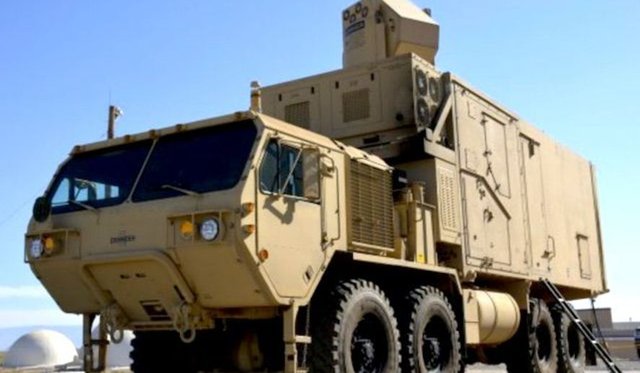
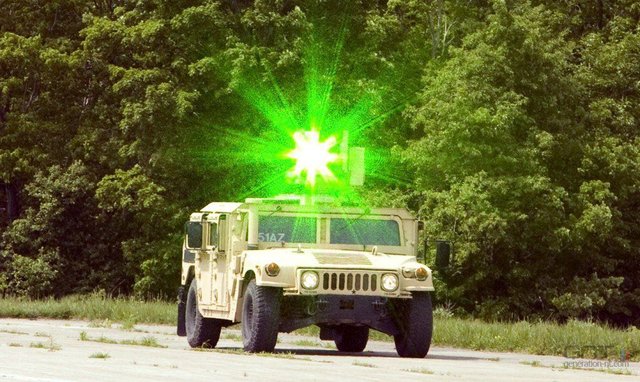
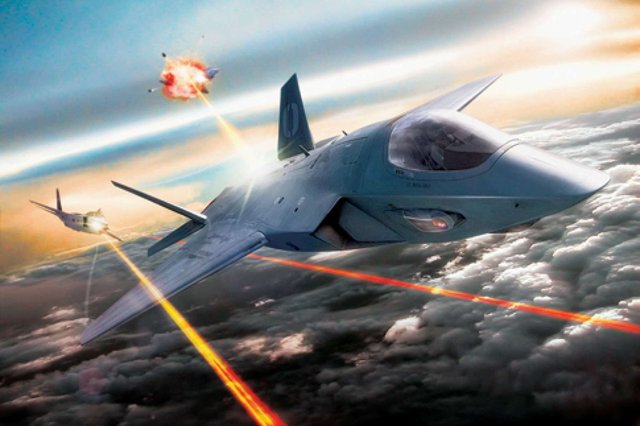
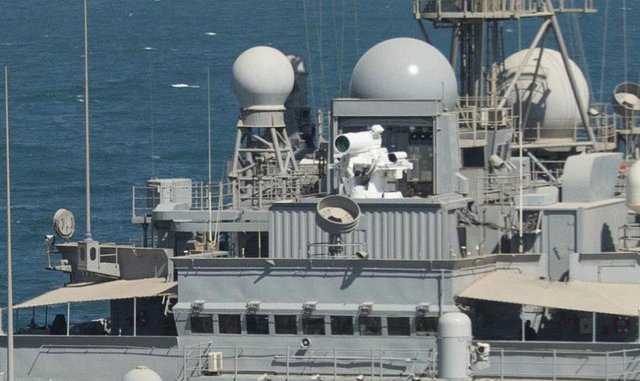
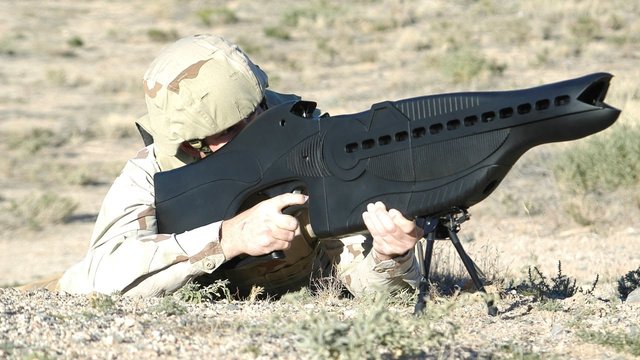
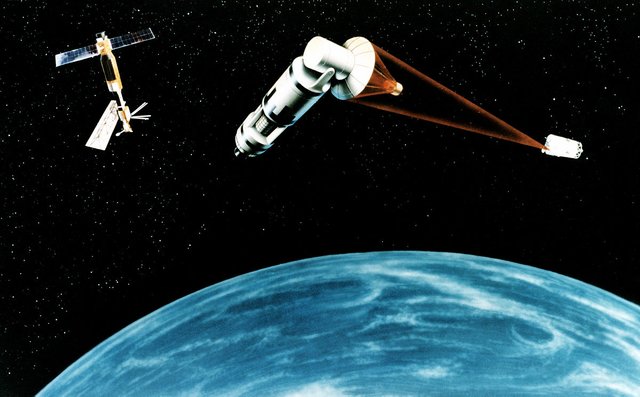
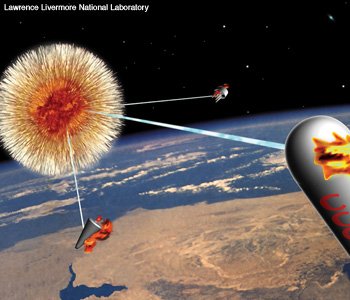
The pulse rifle stuff is pretty insane.
Love the writing style. The big, old tabletop laser we had in my lab was called "an inefficient water heater that happens to put out a small light". I've only ever used lasers for research. Intersting to read about the military applications.
Nice post. Good read. Broad in coverage. Thanks for this.